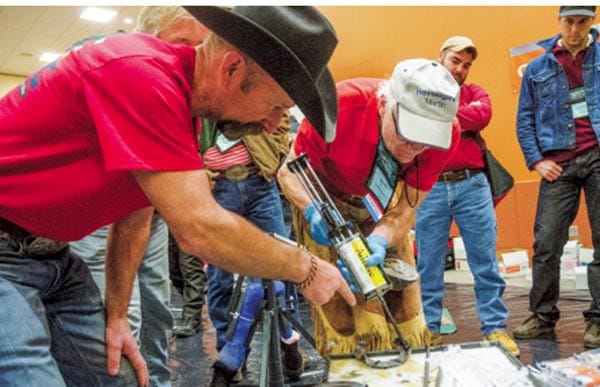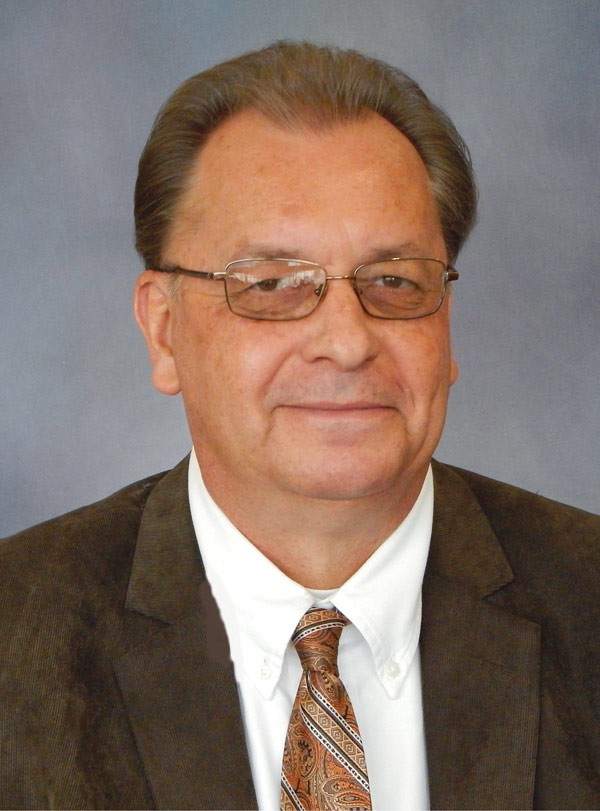Are you as good a farrier today as you will ever be? Do your current abilities guarantee you will have a successful career?
Graduating from farrier school won’t be enough. Industry leaders point to an increasing emphasis on continuing education and professionalism in the farrier world — the ongoing need to add to your knowledge and skills.
Continuing education can earn credentials from farrier organizations to document your competence and expertise, and those credentials can be shared via business cards, websites and word-of-mouth to win the confidence of horse owners and turn them into clients.
Farrier Takeaways
- Hammer-ins, forging contests and certifications are great opportunities for a new farrier to gain some hands-on experience.
- Finding a mentor is an effective way of beginning your networking circle to enhance your growth as a farrier.
- Forging competitions can help contestants improve their skills in the fire while getting hands-on instruction from experienced farriers.
“Having formal education standards is a key factor for the future of the industry,” says Bryan Quinsey, the executive director of the American and International Associations of Professional Farriers (AAPF/IAPF). “We want to be able to show horse owners a farrier’s ongoing commitment to continuing education.”
Available Credentials
The AAPF was created in 2011 to promote continuing education (CE). The organization’s founders wanted to encourage and support ongoing education for farriers, as well as veterinarians involved in hoof care.
The AAPF assigns CE credits to every farrier event in the United States. Its international arm, the IAPF, does so worldwide. The number of credits is based on the information presented and the number of hours involved. Most 1-day events offer six or seven credits, while a large, 4-day event such as the International Hoof-Care Summit may offer 24 credits.
Farriers earn the designated CE credits for each event attended, and the AAPF offers credentials as “Accredited Professional Farrier” (APF) to those who earn a minimum of 24 CE credits each year. That minimum number of credits must be earned each year to maintain APF accreditation.
The American Farrier’s Association (AFA) certification program operates differently. It consists of three categories: classification, certification and endorsement. The certification and endorsement designations have associated options and levels of progression.
The ascending levels of AFA certification include Farrier Classification (FC), Certified Farrier (CF), Certified Tradesman Farrier (CTF) and Certified Journeyman Farrier (CJF). Endorsement options include Therapeutic (CJF TE) and Educators (CJF EE).
Each certification requires the passing of an AFA test, and the certifications are good for life.
Earning Education Credits
Travis Burns advises inexperienced farriers to extend their education by attending as many events as they can, noting that the AFA’s chapter associations offer local events, making them accessible to virtually every farrier who’s interested.
“That’s a wonderful way to find many different events, from weekly hammer-ins to farrier contests and certifications,” says Burns, who is president of the AFA, and associate professor and chief of farrier services at the Virginia-Maryland College of Veterinary Medicine.
The sooner you can immerse yourself in continuing education, the better off you are …
“They tend to be a little smaller and more personal. The ones I prefer the most are events with hands-on opportunities, where you actually do some forging or shoe-making, or you do a foot dissection, or you patch a crack or things like that.”
Prepare To Learn
Quinsey suggests that before attending an event, inexperienced farriers should join an association and find a mentor or two who can help them understand the information being presented. The seasoned farrier will introduce you to other veteran farriers who can help in similar ways, he says, “and your networking circle will grow and grow over time.”
To get the most from an event, Burns recommends preparing for it.
“Too often, people just show up, not knowing what’s going on or what they know versus what they don’t know,” he says. “Have a plan. You should be thinking, ‘This is what I do know, but I need clarification on X, or I need help doing Y.’ That will help you get the answers you really want.”
He suggests finding out the topics to be covered and having specific questions ready. If hands-on sessions are included, make sure you have your tools at hand and prepped for use.
Some larger events hold numerous sessions simultaneously, but schedules are available in advance. Before attending the event, review the schedule and choose the sessions that best meet your needs, Burns advises.
However, he also recommends that all farriers, regardless of their experience, pick at least one session on a topic outside their usual realm.
“They should take the time to go to something outside their comfort zone,” Burns says. “You never know what you might pick up or when somebody might say something that changes your mind about things.”

Have a plan when attending hoof-care education events such as the International Hoof-Care Summit. Recognize what you need help with and ask questions.
Online Opportunities
Quinsey encourages participation in online webinars and podcasts, noting that even veteran farriers have found that they can conveniently learn from these online sources on their phones while driving from client to client.
Burns also recommends taking advantage of online opportunities. Online education has the advantage of being accessible virtually anywhere, he says.
“You can get information and education without leaving your house,” Burns says. “And the younger generation already gets a tremendous amount of information, associations and friendships through social media. It allows access to individuals you might never meet. For my generation, having great international farriers come to events in the States really helped. Now, you can go online and get advice from excellent farriers.”
Farrier Contests Help
Forging competitions are another continuing education opportunity. Burns calls them “highly educational,” although he concedes that such events sometimes intimidate young farriers.
“There’s a lot of talking about how to do things, and about things outside of forging,” he says. “At contests, the farriers you’ll meet are extremely open-minded and humble. To get to the level they’re at, they’ve had to try and fail themselves a lot, and they’re willing to help anyone who’s willing to try.”
Craig Trnka of Edgewood, N.M., is a past president of the AFA and a member of the International Horseshoeing Hall of Fame. In 2007, he founded the World Championship Blacksmiths (WCB), an organization that stages horseshoe-forging competitions at equine events across the United States.
WCB stages five contests each year with the goal of educating both farriers and the horse-owning public.
“We teach horse owners about what they can expect from a farrier,” Trnka says. “And we tell them that if they have a farrier who’s not into continuing education, they’ve got the wrong farrier.”
The contests offer a hands-on approach to educating farriers.
“We try to teach them the skills they need on the anvil and the horn, and how to modify shoes,” he says. “Those are basic foundations that you need to be a horseshoer. There are very few clinics out there that allow you to work on a live animal like we do, and there are lots of farriers there to help with the training.”
Trnka believes the typical 8-week shoeing school programs in the U.S. do not sufficiently prepare students to become professional farriers. He notes that in England, farrier schools have traditionally offered 4-year degree programs, and that is being increased to 5 years.
“Here, students get out of school and they’re trying to be competitive with experienced farriers,” he says. “It takes them about 6 months to figure out they’re not going anywhere, and they go work for somebody else. Then the education really starts.
“If you don’t start out working with someone, you can waste 5 or 6 years of your life. Your business will be small and you learn bad habits, perpetuating your errors. You need to network with experienced farriers. Once you’re networking with experienced farriers, you can grow. The sooner you can immerse yourself into continuing education, the better off you are.”








